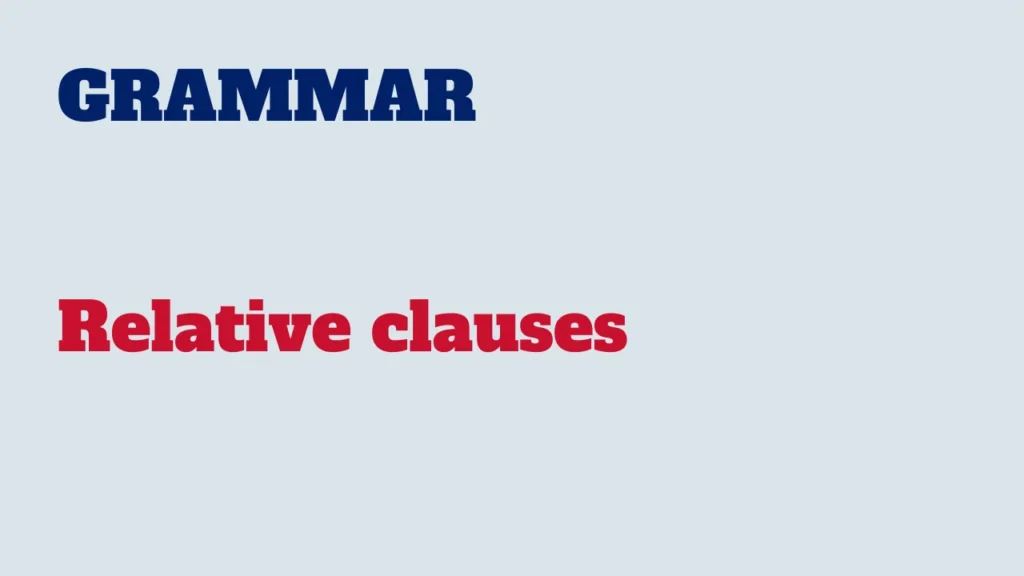Relative clauses are used to provide additional information about a noun in a sentence. They begin with a relative pronoun (who, whom, whose, which, that) or a relative adverb (where, when, why). Understanding how to use relative clauses is important for constructing complex and descriptive sentences.

In this lesson, we will delve into the structure, types, and common usage of relative clauses.
Defining relative clauses:
What is a defining relative clause?
Defining relative clauses provide necessary information to comprehend the sentence. It is crucial for understanding the overall meaning.
Structure:
Relative Clause = Relative pronoun/adverb + Verb
Examples:
The woman who lives next door is a doctor. (The relative clause here specifies which woman we are talkin about.)
I have a friend whose brother is a musician. (Specifies which friend the speaker talks about.)
This is the book that I was telling you about. (Specifies which book.)
Common uses of defining relative clauses:
- Providing essential information about the noun.
- Identifying or specifying the noun.
Non-defining relative clauses:
What is a non-defining relative clause?
Non-defining relative clauses offer additional details. Even if we omit the non-defining relative clause, the sentence remains meaningful.
Structure:
Non-defining relative clause = Relative pronoun/adverb + verb
Examples:
Here are examples in which relative clauses provide additional information or extra details:
My sister, who lives in Paris, is coming to visit.
The Eiffel Tower, which is in Paris, is a famous landmark.
John and Mary, whose wedding was last month, are on their honeymoon.
Common uses of non-defining relative clauses:
- Offering additional, non-essential information about the noun.
- Providing extra details for clarification or emphasis.
Relative pronouns:
- Who: Referring to people (subject).
- Example: The woman who is singing is my cousin.
- Whom: Referring to people (object). More formal and less commonly used in modern English.
- Example: The woman whom I met is a professor.
- Whose: Indicating possession for both people and things.
- Example: The boy whose car broke down needs help.
- Which: Referring to things (subject or object).
- Example: The book which is on the table is interesting.
- That: Used for both people and things, restrictive clauses (defining).
- Example: The car that I bought last week is red.
Common mistakes to avoid:
Omitting the relative pronoun:
Incorrect: The girl lives next door is a doctor.
Correct: The girl who lives next door is a doctor.
Using “Which” for people:
Incorrect: The man which is singing is my friend.
Correct: The man who is singing is my friend.
Additional tips:
Punctuation:
Use commas to set off non-defining relative clauses. No commas are used for defining relative clauses.
Example: “My brother, who is an architect, designed our house.”
Avoid ambiguity:
Be clear about which noun the relative clause is modifying to avoid confusion.
Mastering the use of relative clauses will enhance your ability to provide detailed and precise information in your writing. Practice incorporating relative clauses into your sentences to become more proficient in their usage. Happy learning!



